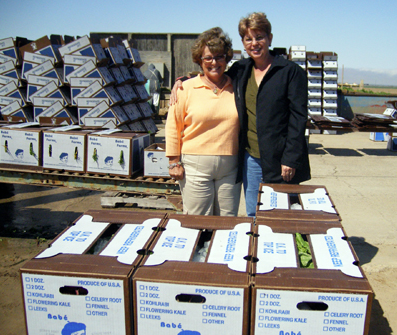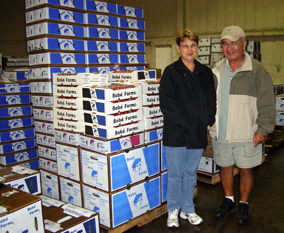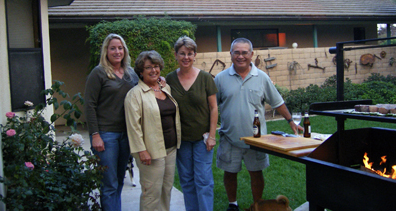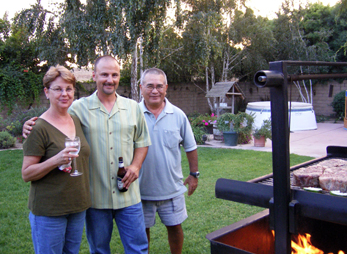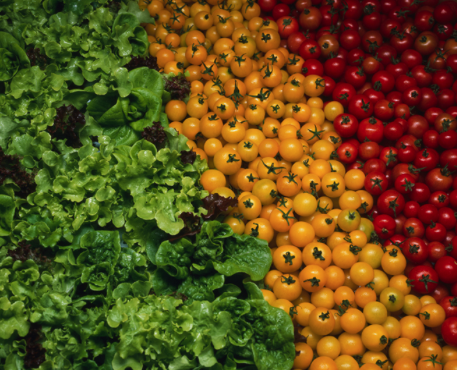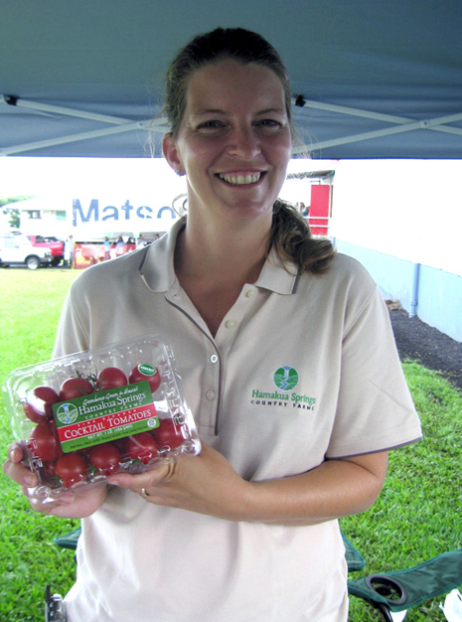Diane Ley, of the County’s Research and Development branch, asked if I would do an interview with Howard Dicus for a segment of the public television program PBN Friday. I thought it might be related to June and me receiving a Best Farmer award at the Hawaii Agriculture Conference this Thursday.
Here is the information I got from Howard Dicus:
“The PBS Hawaii studios are at the corner of Dole and University, across from the UH campus….It would be good if they could arrive by 9 a.m., which will leave plenty of time for them to get their TV make-up on before we start taping. The make-up lady will also REMOVE the TV make-up after the taping if they don’t want to go around town looking like movie stars.
“I’m working on the script for the all-food show, and as it stands now it opens with Andy Hashimoto, who has separately confirmed, then Richard Ha will be on second, Joan Namkoong third, and chef Ming Tsai on the couch. I’m treating Ha, at least for purposes of beginning the segment, as a representative example of the Big Island farmer who raises a number of crops.”
As soon as I got the instructions I started preparing mentally. Many years ago, when I did a TV presentation with Dr Jack Fujii, former Dean of the College of Agriculture at the UH Hilo, I had a bad experience. I had diligently prepared for the presentation, but the red light on the live camera blindsided me.
That time it was as if a million people were staring at me through the lens below the red light. And to my horror, I had found my mouth jogging ahead of my brain. I had no idea what I was talking about and I was sure I was sweating profusely.
I wanted to be sure this wouldn’t happen again, so this time I prepared myself for that red light. At first I imagined that behind the lens there would be an average person wearing boxer shorts, no shirt and a three-day-old stubble. This, I thought, would be an easy person to relate to. But then the thought popped into my mind that that guy’s family kitty might be named “Spike.” Suddenly that image seemed unpredictable and possibly unreliable, and I worried it might make me start sweating again.
So instead I imagined a nice couple with two young children, two doggies and a kitty named “Kitty.” I practiced on my flight over to O‘ahu by imagining the “Fasten Seat Belt” light was the red light on top of the camera. After a few tries, I realized I would have no problems with this nice family and with the red light. I was very comfortable.
But then I started worrying about the makeup—would they ask me to put on lipstick? No way, I thought. I don’t do lipstick. But it might really help our farm if I made a good impression on public television, I thought, so maybe colored ChapStick would be okay. But no lipstick. Absolutely not.
I found the PBS station, no problem. And soon after arriving it was my turn for makeup. I asked Dean Hashimoto, the Dean of the University of Hawai‘i’s College of Tropical Agriculture, to take a picture of me getting made up. The last time I remember putting on makeup was when I was in the fourth grade and they made my cheeks red for a Christmas play. I’m pretty sure this might be the last time I ever get made up.
Dean Hashimoto was up first and he spoke about the College of Ag and its programs. I remember that he did a really good job.
Then it was my turn to be interviewed. I wanted to talk about sustainability, our close partnership with Chef Alan Wong, how we would not be anything without our wonderful employees, our Food Safety certification and more. But the absolute only thing I remember about the interview was what Howard Dicus told me before it started: “Before you know it, it’s over.”
He was right. Before I knew it, it was over and I didn’t remember one thing I said. Not one thing.
(It airs on Friday, November 24 at 7:30 p.m. on PBS Hawai‘i, by the way, if you want to see what I said. I know I do.)
I walked off and Joan Namkoong went on. I remember that she talked about her cookbook and the Kapi‘olani Farmers Market and she did great.
And then it was all over. The only thing left to do was have the makeup person remove the makeup–unless I wanted to walk around looking like a movie star. I thought, Hmm, I could walk around looking like a movie star? And I walked out the door.
It didn’t take me any time at all to realize that no one noticed or cared. I got a phone call, and afterward I realized the makeup might have smeared, leaving me with a dirty face. This must be what women worry about. This is more than I wanted to know about makeup.
So to recap, I met an imaginary nice family on the other side of the red light, I learned something about wearing makeup, and there was absolutely nothing in between. Very interesting day.



